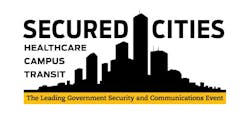Public/private partnerships drive innovative public safety initiatives

Law enforcement agencies and others in the Public Safety sector need new and smarter solutions to ensure our security. They need ways to harness information to better understand situations and how to respond faster to threats.
Data visualization, real-time collaboration and credible analytics can help agencies monitor city areas, predict and respond more effectively to incidents, streamline information sharing and collaborate in the management of major events and emergencies.
As cities work with the private sector to gradually implement new competencies and technologies, the increased information-sharing and unified communication efforts are helping them to establish solutions that help identify successful outcomes and assists in developing preventive tactics.
Yet these public-private partnerships are not new. Various natural disasters in the late nineteenth and early twentieth centuries began to solidify the role of collaborative public and private sector efforts in public safety scenarios.
When you consider that 85 percent of the nation’s critical infrastructure is under private sector control, alliances between government and business are not only essential for homeland security, but for municipal and community security as well. Public-private partnerships can:
- enhance hiring,
- resource utilization,
- specialization,
- cross-sector trust,
- and technological innovation.
They are often able to cut across traditional bureaucratic divides within government. And they can enhance public protection in ways not possible for government or businesses acting independently.
To that end, secured and safe city initiatives have created models for successful collaborative efforts across the United States.
From New York’s massive municipal video surveillance system and homeland security network to community-supported projects in Houston, Atlanta, Chicago, Dallas and Baltimore, the goal of creating safe living and business spaces is being embraced by government, law enforcement and the private sector.
Sharing this vision and providing peer-based best practices on how this world of collaboration works, is the mission of Secured Cities.
Secured Cities, the nation’s leading event focused on municipal public safety, emergency management, communications, video surveillance and information technology provides attendees with peer-based experience in the development, implementation and uses of these complex systems. With more jurisdictions being charged every day with the development or improvement of these systems, frequently without additional funding, Secured Cities is the one event that can help answer critical questions.
If you can only attend one event this year, Secured Cities is your MUST ATTEND event. It provides real-world solutions for security, public safety and emergency management and operations, funding and grant approvals, strategies for partnering and collaboration, technology selection and system implementation. Project partners discuss what is trending in funding and grants, current video surveillance and security design and best-of-breed emergency management solutions.
The 8th edition of the Secured Cities conference will be held November 15 – 17, 2016 in Houston, TX.
Recognized as the largest and only conference dedicated to the public/private partnership initiatives in the Public Safety and emergency management sectors, Secured Cities delivers a unique blend of peer-to-peer learning on hands-on experience.
Coordinating efforts among public and private municipal stakeholders allows for a cohesive security and risk mitigation plan. That is the mantra of Secured Cities, the only content-driven national conference providing an interactive forum for public safety, law enforcement and management-level security personnel – both public and private – to address trending topics relevant to securing municipal, educational, and healthcare and transportation sectors.
Funding and rapid technology advancement are two issues both public safety and security personnel are challenged with when it comes to today’s strategic planning. As public and private partnerships emerge across the country, having a venue where law enforcement, emergency management, security and government officials can meet in a collaborative environment is essential. Secured Cities is that venue.
Whether you are accountable for understanding and implementing government funding and grant initiatives, emerging technologies, security and emergency management policy and operations, best practices and peer-led applications, Secured Cities provides the educational and networking opportunities to help you establish the programs and build the relationships to address today’s security and emergency management challenges.
The one-of-a-kind event showcases the wireless capabilities of our nation’s cities and suburbs, featuring three days of classroom sessions/panel discussions, a two-day sponsors’ hall featuring the latest in new products and technologies, and several interactive venue security tours including, NASA Kennedy Space Center, Reliant Stadium complex, and the City of Houston’s Office of Emergency Management Operations Center and HEC.
Also, Security Technology Executive magazine, in coordination with Secured Cities, are again honoring the most innovative integrated deployments the security industry has to offer. For the 10th consecutive year, security, risk, emergency management and law enforcement professionals, along with systems integrators and PE firms are invited to showcase their unique projects. The winning projects in the highly competitive Security Innovation Awards program will receive some well-deserved recognition at the Secured Cities Awards Reception at the Crowne Plaza Reliant Park hotel on November 16, 2016.
Steve Lasky is Editorial Director of Security Technology Executive, Security Dealer & Integrator magazines and SecurityInfoWatch.com.
The Event Focused on the Safety and Security of Your Community
Secured Cities is the premier conference focused on the public/private partnership initiatives driving the safe and secure city environment. Encompassing all urban stakeholders from law enforcement, government, healthcare, education and transportation.
- Best practices and lessons learned for governance
- Funding and technology implementation
- UASI grant writing
- Municipal video surveillance
- PSIM integration
- Emergency management
- IT infrastructure for city networks
- Emergency communications/response
- Risk assessment and security planning
- Public Safety leadership training
For information on sessions, tours and registration please go to SecuredCities.com


